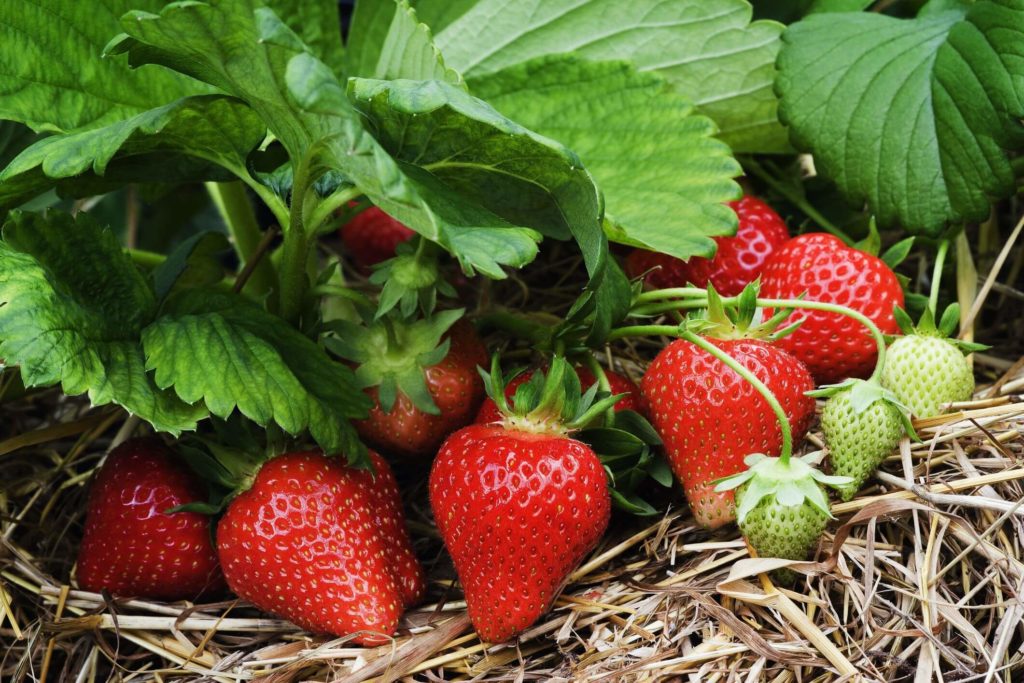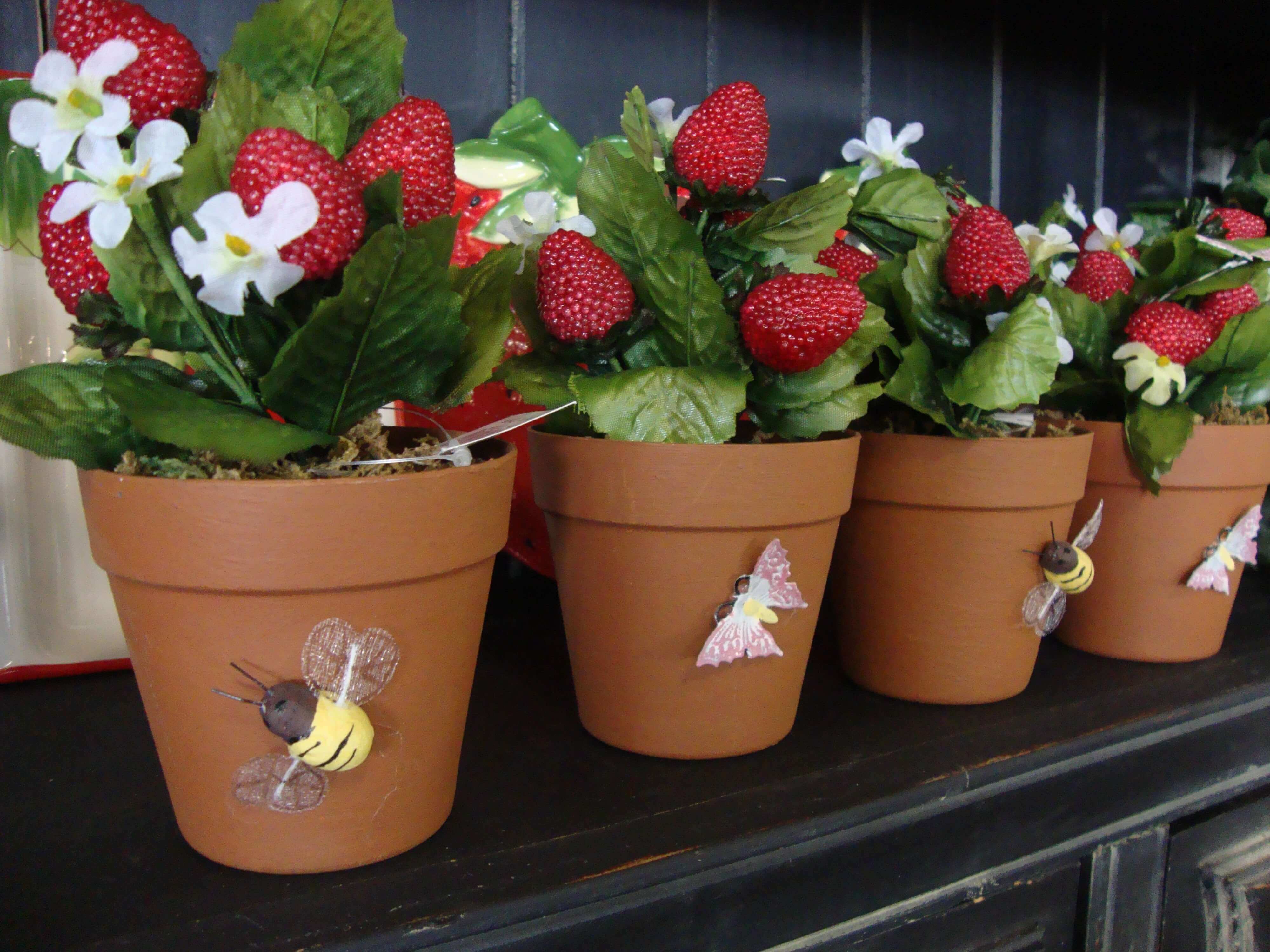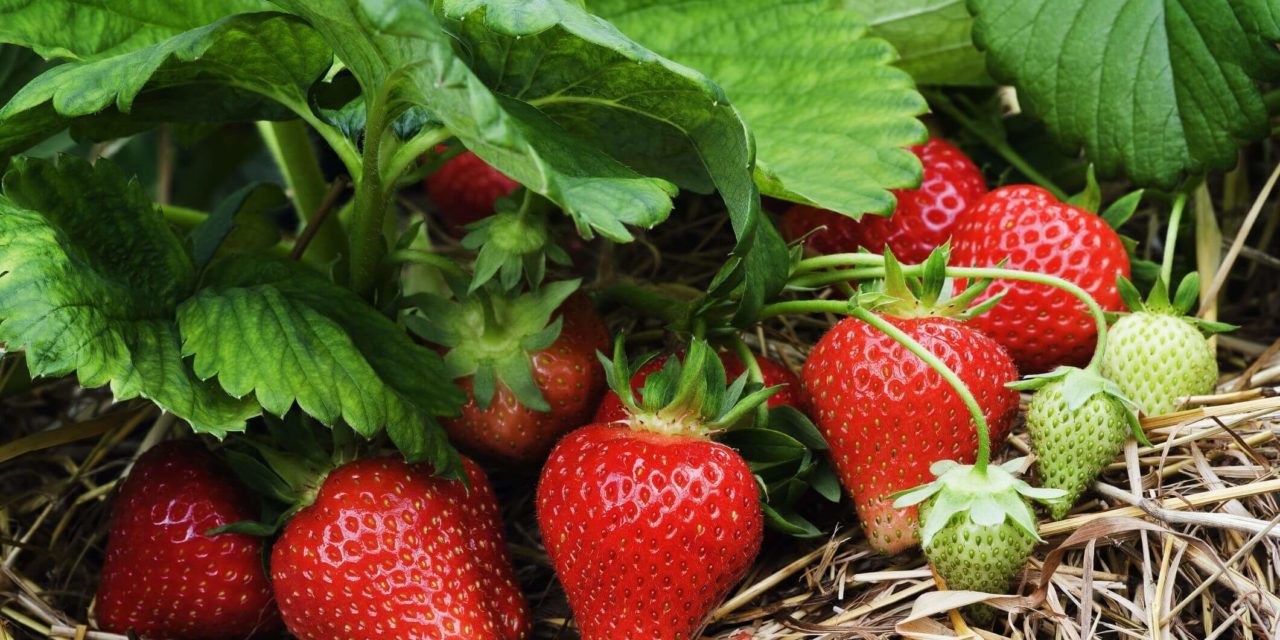Strawberries are one of the most delicious berries you can grow, and as long as you do it right, they'll reward you with a huge bounty! These 10 tips for growing strawberries will ensure that you get the biggest, most flavorful strawberries you've ever had! Strawberries don't require a lot of space, so they're perfect for small gardens as they can be planted in hanging baskets, pots, or containers.
The most important thing when growing strawberries is to provide them with full sun. As long as you do that, these plants will produce fruit quickly and you'll soon be rewarded with a huge bounty of beautifully red berries. Before you start to grow your strawberries, you'll need to decide the type of strawberry you'd like to grow. Strawberry plants come in three different types:
June Bearing Varieties: These June bearers will usually grow all at once over a period of about 3 weeks. They will produce buds in autumn and flowers and fruit the following June. For those living in warmer climates, keep in mind that although they're called June bearers, they might bear earlier.
Everbearing Varieties: This variety produces a big crop in the spring, a smaller crop in the summer, and another crop in late summer/fall.
Day Neutral Varieties: Day neutral strawberries will continuously produce fruit throughout the season until the first frost, so their growing season is long. These are insensitive to day length, these strawberries produce buds, fruits, and runners non-stop so long as temperatures remain between 35-85F (1-30C).
Not sure which strawberry variety to grow in your home garden? Experts recommend June bearers for home gardens. Although you do have to wait a year for harvesting, it is absolutely worth it!
10 Tips for Growing Strawberries in Your Garden

#1. Plant Early
The earlier you plant your strawberries, the more strawberries you'll get to enjoy all summer long! Earlier planting means a longer growing season. So instead of planting in June, think of planting as early as you can, (early spring) as long as there is no danger of overnight frost. Plant new plants every year to keep berry yield high and keep soil disease free.
#2. Choose a Sunny Spot
Strawberries taste better if they're grown in a sunny spot! Just make sure to plant them in the early morning or in the evening. Typically, strawberries need about 6-10 hours of direct sunlight. Although strawberries aren't too picky about the soil they're grown in, they do prefer loam. For best results, work in aged manure or compost a couple of months before planting. Soil pH should be between 5.5 and 7. If your soil is more alkaline, it's best to plant your strawberries in pots or containers.
#3. Give Them Space
Strawberries love some room to breathe, so make sure to plant them at least 30cm deep and at least 40cm between each row. Strawberries are sprawling plants, so they'll need plenty of room to roam. Seedlings will send out runners, also called “daughter plants” which will send out their own runners.
#4. Don't Water-log Them
Make sure to plant in well drained soil, as strawberries can rot if they become waterlogged. Water immediately after planting. Water about 1 inch per week. Your strawberry plants will need a lot of water when the runners and flowers are developing and once again in the fall when the plants are mature.
#5. Grow Them in Pots or Raised Beds

To protect your strawberries, it's best if you grow them in raised beds or pots. This way you can control weeds as well as pests.
#6. Pick the Flowers
Pick the first flowers that come upon your strawberry plants to promote better growth. In the first year, pick the blossoms to discourage the plants from fruiting. If they're not allowed to bear fruit, they will spend their energy on developing healthy roots, and they yields will be much bigger next year. Also, be sure to eliminate daughter plants as needed. As a rule of thumb, second and third generations will always produce more. Keep the daughter plants 10 inches apart.
#7. Fertilize
When flowers appear, it's time to fertilize. Use a fertilizer high in potash to feed your strawberries so they get big and healthy. During warm weather, strawberries will ripen about 30 days after blossoms have been fertilized.
#8. Remove the Runners
Runners are off-shoots of the strawberry plant. A young strawberry plant will not fruit as well and as quickly if the shoots are using up their energy. Instead, remove the runners and plant them to grow even more strawberry plants.
#9. Plant a Variety
Plant different strawberry varieties so you'll have a continuous summer harvest. Different varieties will fruit at different times, so the more varieties you plant, the more strawberries you'll have! See above for the different types of strawberries you can plant.
#10. Plant Enough
Strawberries are SO delicious that everyone will want some of your home-grown strawberries. We recommend you plant at least 5 strawberry plants per person.
How to Grow the Best Tasting Strawberries
Check out this video courtesy of BandQ to learn how to grow the absolute best tasting strawberries!
How to Care for Strawberries in the Winter
Additionally, your strawberries will need to be taken care of in the winter. Because strawberry plants are perennial, they are naturally cold hardy and will survive freezing temperatures. If you live in an area with relatively mild winters, your strawberry plants should be able to survive.
In areas where the temperature drops below the low 20s (-6C or lower), strawberries will become dormant, and will need some protection. Here's how to protect your strawberry crop in the winter:
- Once the growing season is over and done with, cut the foliage down to once inch. You can do this safely after the first couple of frosts or once temperatures reach 20F (-6C).
- Mulch your strawberry plants 4-6 inches deep with straw, pine needles, or other organic matter. This will help give the plants extra protection from the cold.
- If you live in an extremely cold climate, add even more protecting by doubling up on straw or other organic matter.
- Remove protective layer early in the spring after all danger of frost has passed.
Strawberry Pests and Diseases
Unfortunately, strawberry plants can be susceptible to some pests and diseases:
- Slugs
- Spider mites
- Gray mold
- Powdery mildew
- Japanese beetles
Preventing pests from devouring your strawberry crop is very important. During fruit production, pests and animals may come into your garden to sample your harvest. Prevent this by always keeping the area weed free and using gritty mulch to prevent slugs and bugs.
To keep bigger bugs at bay, such as Japanese beetles, spray your plants with pureed garlic or neem oil.
Keep squirrels, rabbits, and other small animals away from your strawberry plants by installing chicken wire around the area or using a net.
To keep birds at bay, spread balloons around the area. Draw eyes onto the balloons and use reflective Mylar bird tape to deter them.
Harvesting Strawberries
- About 4-6 weeks after blossoming, the strawberries should be ready for harvest.
- Make sure to only harvest once the fruits are fully red and pick every three days.
- Always cut by the stem and never pull the berry as this could damage the plant.
- June bearing strawberries' harvest will last for about 3 weeks.
Best Strawberry Varieties
We recommend you plant different varieties of strawberries. This way, you can learn which variety you like best and which variety prefers your climate and soil.
Northeaster: This variety is best for northeastern US and Canada. The berries have a strong aroma and taste.
Sable: An early season strawberry plant that's suited to those in USDA zone 3 with a really great flavor.
Cardinal: Best suited for Southern areas.
Primetime: Great for the Mid-Atlantic, these mild tasting strawberries are disease-resistant.
Tristar: A day-neutral variety that's great for growing in hanging baskets.
Camarosa: Best suited for the North Coast.
These 10 tips for growing strawberries will ensure you have a full strawberry bounty all summer long! Learn more about how to grow strawberries.
Happy Planting!




















What is the best way to grow strawberries?
Hi Lucille,
There are many different ways you can grow strawberries, and it all depends on how much room you have in your garden. We prefer to grow strawberries in raised beds, but you can also grow them directly in the ground and in pots as well!